Flowerhorn Fish Care: Did you know flowerhorn cichlids may reach 16 inches in length? They’re not only beautiful with vibrant colors and a unique look but also quite big. Being a top choice for fish hobbyists, taking care of them takes know-how and careful attention.
Table of Contents
Key Takeaways:
- Flowerhorn cichlids can grow up to 16 inches in length.
- These fish have unique appearance with vivid colors and a distinctive head hump.
- Caring for flowerhorn fish involves providing the right tank setup, diet, and water parameters.
- They are territorial and semi-aggressive, so choosing suitable tank mates is crucial.
- Preventive measures, such as maintaining clean tank conditions, can help avoid common diseases.
Flowerhorn Fish Overview
| Attribute | Details |
|---|---|
| Scientific Name | Amphilophus spp. (Hybrid) |
| Common Name | Flowerhorn, Flower Horn Cichlid |
| Origin | Man-made hybrid, originally from Southeast Asia |
| Size | Up to 12 inches (30 cm) |
| Life Expectancy | 10-15 years |
| Different Colors | Various colors and patterns, including red, yellow, blue, and pearl scales |
| Diet | Omnivore – high-quality pellets, frozen foods like shrimp, vegetables |
| Temperament | Highly aggressive and territorial, especially as adults |
| Tank Size | Minimum 75 gallons for one, 150 gallons for a pair |
| Temperature | 80°F – 86°F (27°C – 30°C) |
| pH | 7.0 – 8.0 |
| Water Hardness (TDS) | 8 – 20 dGH |
| Care Level | Expert |
| Breeding Style | Substrate spawners, parental care |
| Compatible Fish | Larger, aggressive fish like Oscars, Arowanas, and large Plecos |
| Type of Tank | Large, well-decorated with rocks and driftwood |
| Tank Mates | Best kept alone or with a mated pair |
Flowerhorn Cichlid Facts & Overview
Flowerhorn cichlids are unique and fascinating. They are a man-made fish for aquariums. They are originally from places like Malaysia, Thailand, and Taiwan. These fish, known for their “flower” marking and head hump, can sometimes be seen in the wild. This happens when they are released from captivity. Flowerhorn cichlids can live up to 10-12 years old and grow up to 16 inches long. This makes them a great addition for any aquarium.
Flowerhorn Cichlid Origins
The story of the flowerhorn cichlid starts in places like Malaysia, Thailand, and Taiwan. Breeders started a selective breeding program to create this special fish. They chose parent fish that had specific traits like head shape, color, and pattern. This effort led to different types of flowerhorn cichlids, such as luohans and kamfa.
Distinctive Appearance
One key feature of the flowerhorn cichlid is its vibrant color. They can be yellow, red, pink, blue, purple, and orange. Males have brighter colors and grow a larger head hump than females. Because of their bright colors and active behavior, they make a great focal point in any tank.
Aquarium Behavior
Flowerhorn cichlids are territorial and like being in pairs. They choose their space in the tank. This can include caves and rocky areas. They are lively during the day. These fish add energy and color to any fish tank.
Purchase Availability
Flowerhorn cichlids can be bought, but they are not as easy to find. They are special and thus, more expensive than some other fish. You might pay $40 to $80 for one. For those wanting these beautiful fish, it’s best to check with good aquarium shops or online sellers.
Appearance & Behavior
Flowerhorn cichlids stand out with bright colors and unique looks. They have a long body, flowing fins, and a special head hump. Their colors range from yellow, red, and pink, to blue, purple, and orange. Males are incredibly colored and have bigger head humps than females.
These fish are not just pretty; they have interesting behavior, too. Flowerhorn cichlids can be a bit rough and like their own space. They enjoy swimming in pairs and are most active when the sun is out. They often pick caves or rocky areas in the tank to keep as their own territory.
It’s crucial to set up enough hiding places for them. This makes the fish feel safe and helps keep peace with other fish. Watching them in their tank, you can see them as they explore and show who’s boss.
Flowerhorn Cichlid Care & Tank Requirements
Caring for flowerhorn cichlids is key to their health and happiness. You must create the right tank environment for them. This is vital for their well-being and long life. Let’s look at what you need to do.
Tank Size
If you want a happy flowerhorn cichlid, give it lots of space. One fish needs a tank of 70 gallons or more. For a pair, go big with at least 150 gallons. This ensures they have room to swim and claim their territory, reducing stress.
Water Parameters
Keep the tank water perfect for your fish. The temperature should be 80°F to 86°F. pH levels between 7-8 and water hardness from 8 to 20 dGH are ideal. Check these levels often to keep your fish healthy.
Substrate and Decorations
Choose a soft substrate like fine gravel to protect their scales. Adding caves and rocks helps them feel secure. Remember, they might move or eat real plants. It’s better to use tough plant species or artificial ones.
Filtration
A good filter keeps the water clean and safe. A powerful canister filter is a must. Add sponge filters to boost the good bacteria that help keep the water clean.
Feeding and Nutrition
These fish eat both plants and meat. Use high-quality cichlid food for their main meals. Give them treats like bloodworms, shrimp, and crickets. Plant-based food like algae wafers also helps keep them healthy.
| Flowerhorn Cichlid Tank Requirements Summary: | |
|---|---|
| Tank Size | Minimum 70 gallons for a single fish, and at least 150 gallons for a pair |
| Water Parameters | Temperature: 80°F to 86°F, pH: 7-8, Water Hardness: 8-20 dGH |
| Substrate and Decorations | Smooth substrate, caves, and rocks for establishing territories |
| Filtration | Powerful canister filter with appropriate flow rate |
| Feeding and Nutrition | High-quality cichlid pellets as the staple, supplemented with proteins and plant-based foods |
Keep their tank up to their specific needs for a happy fish. Check the water, clean the tank, and watch how they act. Your effort will be rewarded with brightly colored, healthy fish.
Tank Mates
When picking friends for flowerhorn cichlids, their fierce and territorial ways are key to consider. These grand fish won’t get along with tiny, bashful, or slow types. It’s also a good idea to skip non-fish pals like shrimp and crabs. They could face off and get hurt.
Choose friends for your tank that match the flowerhorns in size and character. This cuts down on fights and helps keep the peace. Here are good fish friends to consider:
- Other Flowerhorn Cichlids: A pair or a small group of these cichlids can work well. Just make sure each one has enough room to claim their own space.
- Leopard Plecos: These catfish are peaceful and fit in with flowerhorns without causing trouble.
- Jaguar Cichlids: Jaguars are a good match in size and attitude for flowerhorns. But, watch how they get along to make sure they’re happy together.
- Giant Gouramis: These big, gentle fish mix well with flowerhorns. They need plenty of space.
- Suckermouth Armored Catfish: These algae-eaters are okay mates for flowerhorns. The flowerhorns usually don’t mind them.
- Spotted Hoplos: These peaceful bottom-dwellers get along with flowerhorns. They take the lower spots, leaving the top for the flowerhorns.
Always watch how your flowerhorns and their new friends get along. Plenty of space and places to hide are crucial to stop fights. Also, slowly introduce new friends. Keep an eye on their behavior to make sure they all live in peace.
Diet and Feeding
Nutrition is key for flowerhorn cichlids’ health and happiness. They love both meat and veggies. But mostly, they need high-protein meals to grow and keep their bright colors. A mix of different foods makes sure your flowerhorn fish stays healthy and shows off its beauty.
For protein, special fish flakes work well. They are packed with nutrients for growth and color. You can also add in live or frozen snacks like bloodworms, shrimp, and crickets. These not only add to their nutrition but also make mealtime fun, like a real hunt.
Don’t forget the greens in their diet. About 30% of what they eat should be from plant sources. Feed them algae wafers, special veggie fish foods, and cooked spinach. These foods give them fiber, vitamins, and other must-haves for a complete diet.
Now, how often should you feed them? Up to three times a day is good, but just enough for them to finish in five minutes. It’s better for them and less messy in their home. Too much food can make them sick and make their water dirty.
Each flowerhorn is different, and they might like their meals a bit varied. Watch how they eat and make changes as needed. This way, you’re giving them exactly what they need to stay healthy.
Feeding Tips:
- Keep an eye on your fish’s body shape. If they’re getting too big, cut back on food.
- Make sure the flakes or pellets are the right size for their mouths. Size matters.
- Give them different foods to keep mealtime interesting and like their natural habits.
- Take out any food they don’t eat to keep the tank clean and their waters healthy.
Offering a good mix of foods is crucial for your flowerhorns’ health. A diet rich in nutrients and diversity keeps them looking great. It also helps them be happy and active in their tank.
| Protein-Rich Foods | Plant-Based Foods |
|---|---|
| Fish flakes for large cichlids | Algae wafers |
| Live or frozen foods (bloodworms, shrimp, crickets, dried grasshoppers) | Prepackaged vegetable fish foods |
Flowerhorn Cichlid Breeding
Breeding flowerhorn cichlids is both exciting and rewarding. But, it’s complex and needs good preparation. These flowerhorn fish breeding tips will guide you to success with these vibrant fish.
Selecting the Breeding Pair
Choose a pair of flowerhorn cichlids that are full-grown and well-suited in size. Confirm they are ready to breed by their vibrant colors and aggressive behavior. Place them in a separate tank to see if they get along and bond.
Creating the Right Tank Environment
Prepare a special tank to inspire your fish to spawn. Keep the water at 80-86°F with a pH of 7-8 and a water hardness of 8-20 dGH. Add spawning cones or flat stones for egg laying.
Providing Live Foods and Regular Water Changes
Give the fish a diet rich in live food like brine shrimp, insects, or bloodworms to spark their breeding instinct. Remember to change the water often to keep it clean. This supports the fish’s health and well-being.
Egg Guarding and Fry Rearing
Once the eggs are laid, the male will protect them until they hatch. Rearing the fry, or baby fish, is hard because they are tiny and delicate. You might want to move them to a safer tank for better care and growth.
Patience and Observation
Success with flowerhorn cichlids needs patience and watching them closely. Not every breeding session will be a win. It might need several tries. Watch how they behave and adjust your care as needed to help them breed well.
| Breeding Tips | Benefits |
|---|---|
| Provide a separate breeding tank | Creates a controlled environment for breeding |
| Maintain optimal water parameters | Ensures breeding success and fry survival |
| Offer live foods for the breeding pair | Stimulates reproductive instincts and improves breeding success |
| Transfer fry to a separate rearing tank | Protects fry and provides better growth conditions |
| Be patient and observant | All breeding attempts may not succeed, so adjustments may be necessary |
By using these flowerhorn fish breeding tips and creating the perfect environment, you’ll boost your chances of success. Enjoy the process of watching your flowerhorn cichlids grow from tiny fry into stunning adults.
Flowerhorn Disease Prevention
Flowerhorn cichlids are stunning creatures in the freshwater world. Yet, they face certain health risks. Preventing disease is key to their well-being. Let’s look at the top steps to keep your flowerhorns healthy:
- Maintaining Clean Tank Conditions: Keeping the tank clean is the first step. This stops harmful germs from growing. Make sure to clean the tank often, get rid of leftover food, and change the water regularly.
- Proper Water Parameters: These fish need the right water settings to be happy. Keep the water warm, with a temperature between 80°F and 86°F. Also, balance the pH between 7 and 8, and the water should be moderately hard, between 8 and 20 dGH. This keeps them stress-free and healthy.
- Quarantining New Fish: Whenever you add new fish, they need to be quarantined first. For a few weeks, keep them in a different tank. This step helps to avoid spreading diseases to other fish in your tank.
- Regular Water Changes: Switching the water up often is crucial. It keeps the water fresh, removes toxins, and ensures your fish have enough oxygen. Plus, it lowers the risk of diseases.
- Identifying and Treating Diseases: Sometimes, diseases still happen, despite your best efforts. Watch your fish closely for any signs they’re not well. If you notice something wrong, seek a vet who knows about fish. They’ll help you figure out the sickness and the best way to treat it.
Use a visual guide to help in disease prevention, showing common flowerhorn fish ailments:
Preventing diseases is much better than treating them. Stick to these guidelines to ensure your flowerhorns live in a healthy space. This way, you can enjoy watching them for a long time.
Flowerhorn Fish Tank Setup
Setting up a flowerhorn fish tank requires careful thought. You need to think about tank size and water quality. These are very important for the happiness of your flowerhorn.
Tank Size
Your flowerhorn needs space to grow and move around. A 70-gallon tank is the smallest you should go for one fish. If you have more than one, a bigger tank is a better choice. More space means less fighting and stress for your fish.
Water Parameters
Keeping the water just right is key to your fish’s health. Water should be between 80°F and 86°F. The pH levels must be 7 to 8, and water hardness should fall between 8 and 20 dGH. Check these conditions often and adjust when needed. This keeps your fish happy and healthy.
Substrate and Decorations
The bottom of your tank should be soft to protect your fish. Use gravel or fine sand for this. Adding caves and rocks gives your flowerhorn safe places to hide. It also helps them feel more at home, reducing stress. Remember, flowerhorns don’t usually like plants, so choose sturdy ones or go for artificial.
Filtration System
A good filter keeps the water clean and safe for your fish. A canister filter works well for flowerhorns. It helps with both mechanical and biological filtration. Keep it clean and change parts when needed to keep the water healthy.
Following these steps will help you make a great home for your flowerhorn. Remember to check the water often, clean the tank regularly, and feed your fish well. This will keep your flowerhorn happy and healthy for a long time.
Flowerhorn Fish Diseases
Flowerhorn cichlids can get sick just like any other fish. It’s key for fish keepers to know about common illnesses. Doing so helps them treat issues early, keeping their flowerhorns healthy. The main illnesses are ich, hole-in-the-head disease, and fungal infections.
Ich
Ich, or white spot disease, is caused by a tiny parasite. The fish develops small white spots that look like salt grains. It’s often due to bad water, stress, or temperature changes. To cure it, raise the tank’s heat to 86°F. Add aquarium salt as the package says. This will kill the ich parasites.
Hole-in-the-Head Disease
Hole-in-the-head disease damages the fish’s skin and head areas. It often comes from bad water, missing vitamins, or poor food. Signs are holes or sores on the fish and a downturn in eating and activity. To fix this, make water better with frequent changes and feed a diet full of nutrients. Your flowerhorn might need medicine, but a vet should confirm.
Fungal Infections
Fungal infections show as white, cottony growths on the fish. These can appear on the skin, fins, or mouth. Bad water, wounds, or bacteria cause them. To stop fungi, keep your tank clean and the water right. Also, use a good anti-fungal treatment made for aquariums.
| Disease | Cause | Symptoms | Treatment |
|---|---|---|---|
| Ich (White Spot Disease) | Caused by the protozoan parasite Ichthyophthirius multifiliis | Small white spots or dots on the fish’s body, fins, and gills | Raise tank temperature to 86°F (30°C) and add aquarium salt |
| Hole-in-the-Head Disease (HLLE) | Poor water quality, vitamin deficiencies, or diet lacking essential nutrients | Pitting, erosions, or open sores on the head, loss of appetite, and lethargy | Improve water quality, provide a high-quality diet, and consult a veterinarian for medication if necessary |
| Fungal Infections | Poor water conditions, open wounds, or bacterial infections | White, cotton-like growth on the fish’s scales, fins, or mouth | Maintain clean tank conditions and use a fungus eliminator |
By taking good care of their tanks and watching water quality, flowerhorn owners can lower disease risks. This leads to a vibrant, healthy space for their fish to thrive.
Conclusion
Caring for flowerhorn cichlids is all about their tank, food, and health. These colorful fish catch the eye of many fish lovers. They are known for their bright colors. They might be aggressive, but a good setup and choosing the right friends can make them calm.
The tank must be big, have the right water, and be decorated well. Keeping the water clean and changing it often is key. Give them a mix of foods, including meat and plants, for their health.
With the right work, flowerhorn cichlids can do well and look great in any tank. Following the tips in this guide will help aquarists take care of these amazing fish. They will live a happy and healthy life with you.
FAQ
What is a flowerhorn cichlid?
Where do flowerhorn cichlids come from?
How long do flowerhorn cichlids live?
How big do flowerhorn cichlids grow?
What is the cost of a flowerhorn cichlid?
What do flowerhorn cichlids look like?
Are flowerhorn cichlids aggressive?
What size tank do flowerhorn cichlids need?
What water parameters do flowerhorn cichlids require?
Can flowerhorn cichlids be kept with other fish?
What do flowerhorn cichlids eat?
How do you breed flowerhorn cichlids?
What diseases are flowerhorn cichlids prone to?
How do you set up a flowerhorn fish tank?
How do you prevent diseases in flowerhorn cichlids?
What is the scientific name of Flowerhorn fish?
Flowerhorn fish are hybrids, so they do not have a specific scientific name. However, they are often referred to as Amphilophus spp. or Cichlasoma spp.
What is the maximum size of Flowerhorn fish?
Flowerhorn fish can grow up to 12 inches (30 cm) in length, with some specimens reaching even larger sizes in optimal conditions.
What is the average lifespan of Flowerhorn fish?
With proper care and ideal water conditions, Flowerhorn fish can live for 10 to 15 years in captivity.
What are the different color variations of Flowerhorn fish?
Flowerhorn fish come in a wide range of colors and patterns, including red, yellow, blue, green, and various combinations of these colors. Some specimens also exhibit pearl or metallic scales.
What is the ideal diet for Flowerhorn fish?
Flowerhorn fish are omnivores and should be fed a varied diet consisting of high-quality cichlid pellets, frozen or live foods like shrimp, krill, and vegetables.
What is the temperament of Flowerhorn fish?
Flowerhorn fish are known for their highly aggressive and territorial behavior, especially as they mature. They are not suitable for community aquariums and should be kept alone or with a mated pair.
What is the minimum tank size for Flowerhorn fish?
A single Flowerhorn fish requires a minimum tank size of 75 gallons, while a mated pair or small group should be housed in a tank of at least 150 gallons or larger.
What is the ideal water temperature for Flowerhorn fish?
Flowerhorn fish thrive in warm water temperatures ranging from 80°F to 86°F (27°C to 30°C).
What is the ideal pH range for Flowerhorn fish?
The ideal pH range for Flowerhorn fish is between 7.0 and 8.0, with a slightly alkaline pH being preferred.
What is the ideal water hardness for Flowerhorn fish?
Flowerhorn fish prefer moderately hard to hard water conditions, with a water hardness range of 8 to 20 dGH (degrees of general hardness).
What is the care level required for Flowerhorn fish?
Flowerhorn fish are considered expert-level fish, requiring experienced aquarists who can provide proper care, including a large tank, stable water parameters, and a protein-rich diet.
What is the breeding style of Flowerhorn fish?
Flowerhorn fish are substrate spawners and exhibit parental care towards their eggs and fry. They require specific breeding conditions and a suitable spawning area.
What fish are compatible with Flowerhorn fish?
Due to their aggressive nature, Flowerhorn fish are best kept alone or with a mated pair. Potential tank mates include other large, aggressive fish like Oscars, Arowanas, and large Plecos.
What type of tank is most suitable for Flowerhorn fish?
Flowerhorn fish require a large, well-decorated aquarium with plenty of hiding spots, rocks, and driftwood. A tank with a sturdy lid is also recommended to prevent potential jumps.
Can Flowerhorn fish be kept with other Flowerhorn fish?
It is generally not recommended to keep multiple Flowerhorn fish together, as they are highly territorial and may engage in aggressive behavior, leading to injuries or fatalities.
Are Flowerhorn fish suitable for beginners?
No, Flowerhorn fish are not suitable for beginner aquarists due to their demanding care requirements, aggressive behavior, and the need for a large, well-established aquarium.
Can Flowerhorn fish be kept with live plants?
Flowerhorn fish can uproot and damage live plants, especially when they are larger in size. It is recommended to use hardy, well-rooted plants or to opt for artificial plants instead.
Do Flowerhorn fish need a specific type of filtration?
Flowerhorn fish require efficient filtration to maintain good water quality. Canister filters or high-quality hang-on-back filters are recommended for their large tank size and waste output.
Can Flowerhorn fish be kept in a brackish water aquarium?
No, Flowerhorn fish are freshwater fish and cannot tolerate brackish or saltwater conditions. They require stable freshwater parameters.
Do Flowerhorn fish need a specific substrate?
Flowerhorn fish do not have specific substrate requirements, but a soft, sandy substrate is often preferred to mimic their natural habitat and allow for spawning.
Can Flowerhorn fish jump out of the aquarium?
Yes, Flowerhorn fish are known to be skilled jumpers, especially when startled or during feeding times. It is essential to have a tight-fitting lid or canopy on the aquarium to prevent them from jumping out.
Are Flowerhorn fish sensitive to water quality?
Yes, Flowerhorn fish are sensitive to poor water quality and require stable water parameters. Regular water changes, efficient filtration, and proper maintenance are crucial for their long-term health and well-being.
Can Flowerhorn fish be bred in captivity?
Yes, Flowerhorn fish can be bred in captivity, but it requires precise environmental conditions, including specific water parameters, spawning triggers, and the presence of a suitable spawning substrate or cave.
What are the common diseases or health issues in Flowerhorn fish?
Flowerhorn fish can be susceptible to common freshwater fish diseases like ich, hole-in-the-head disease, and bacterial infections if water quality is poor or they are stressed.
Can Flowerhorn fish be kept in a community aquarium?
No, Flowerhorn fish are not suitable for community aquariums due to their highly aggressive and territorial nature. They should be kept alone or with a mated pair in a species-specific tank.
Do Flowerhorn fish need a specific water flow?
Flowerhorn fish prefer moderate water flow in their aquarium, as they are adapted to riverine environments in their natural habitat. Strong currents can stress them and make it difficult for them to swim and forage.
Can Flowerhorn fish be kept with other cichlids?
It is generally not recommended to keep Flowerhorn fish with other cichlid species, as they may exhibit aggression and territorial behavior towards each other, leading to conflicts and potential injuries.
Are Flowerhorn fish suitable for a planted aquarium?
While Flowerhorn fish can be kept in a planted aquarium, they may uproot or damage delicate plant species. It is recommended to use hardy, well-rooted plants or to opt for artificial plants instead.
Do Flowerhorn fish need a specific lighting?
Flowerhorn fish do not have specific lighting requirements, but they may appreciate moderate to bright lighting conditions that mimic their natural habitat.
Can Flowerhorn fish be kept in a fish-only aquarium?
Yes, Flowerhorn fish can be kept in a fish-only aquarium, provided their water parameter requirements are met and they are kept alone or with a mated pair.
Do Flowerhorn fish need a specific type of decoration?
Flowerhorn fish benefit from having plenty of hiding spots and decorations in their aquarium, such as rocks, driftwood, and caves. These provide them with a sense of security and help reduce stress.
Can Flowerhorn fish be kept with live driftwood?
Yes, Flowerhorn fish can be kept with live driftwood in the aquarium. Driftwood can provide hiding spots, create a natural-looking environment, and help maintain stable water parameters.
Are Flowerhorn fish sensitive to medications or chemicals?
Flowerhorn fish can be sensitive to certain medications and chemicals used in aquariums, such as copper-based treatments or high levels of ammonia or nitrites. It is important to follow dosage instructions carefully and monitor water parameters closely.
Can Flowerhorn fish be kept in a nano aquarium?
No, Flowerhorn fish are not suitable for nano aquariums due to their large size and aggressive behavior. They require a minimum tank size of 75 gallons for a single fish and even larger for a mated pair or group.
Do Flowerhorn fish need a specific type of substrate?
While Flowerhorn fish do not have specific substrate requirements, a soft, sandy substrate is often preferred to mimic their natural habitat and allow for spawning.
Can Flowerhorn fish be kept with other aggressive fish?
Flowerhorn fish can be kept with other large, aggressive fish species like Oscars, Arowanas, and large Plecos, provided the tank is large enough to accommodate their combined space requirements and territorial behavior.
Do Flowerhorn fish need a specific type of aquarium decor?
Flowerhorn fish benefit from having plenty of hiding spots and decorations in their aquarium, such as rocks, driftwood, and caves. These provide them with a sense of security and help reduce stress.
Can Flowerhorn fish be kept with live rock?
While Flowerhorn fish can be kept with live rock in the aquarium, it is generally not recommended as they are freshwater fish and live rock is typically used in saltwater aquariums.
References
International Flowerhorn Association
The South American Cichlid Association (SACA)
The American Cichlid Association (ACA)





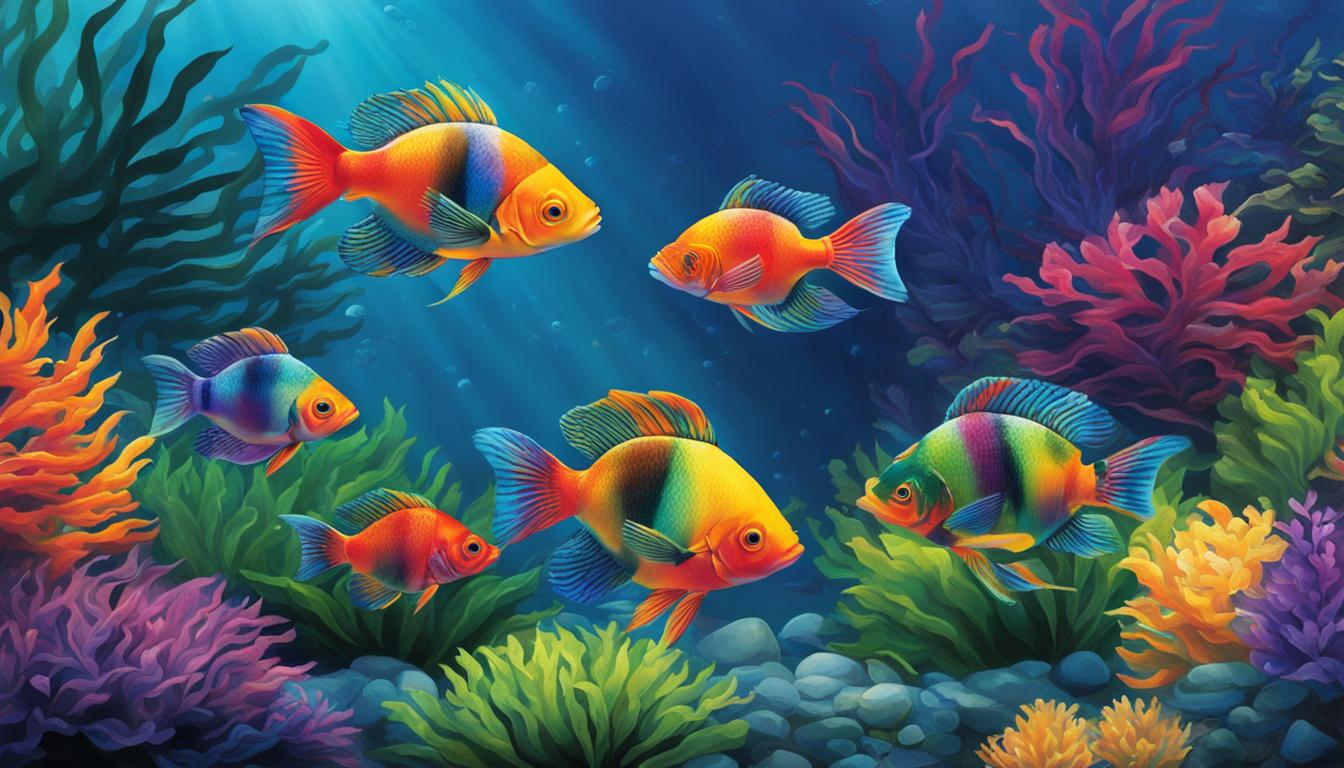
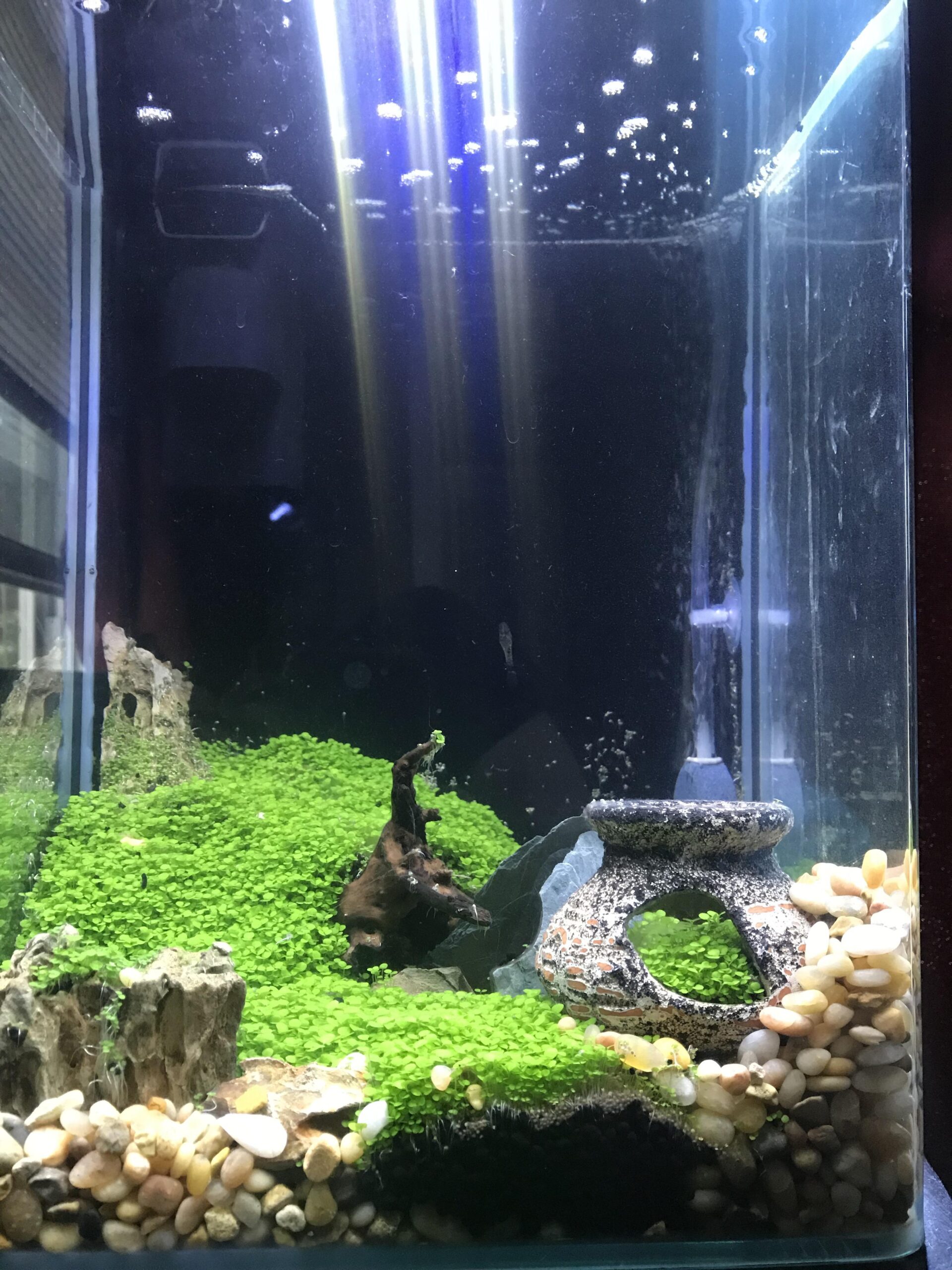

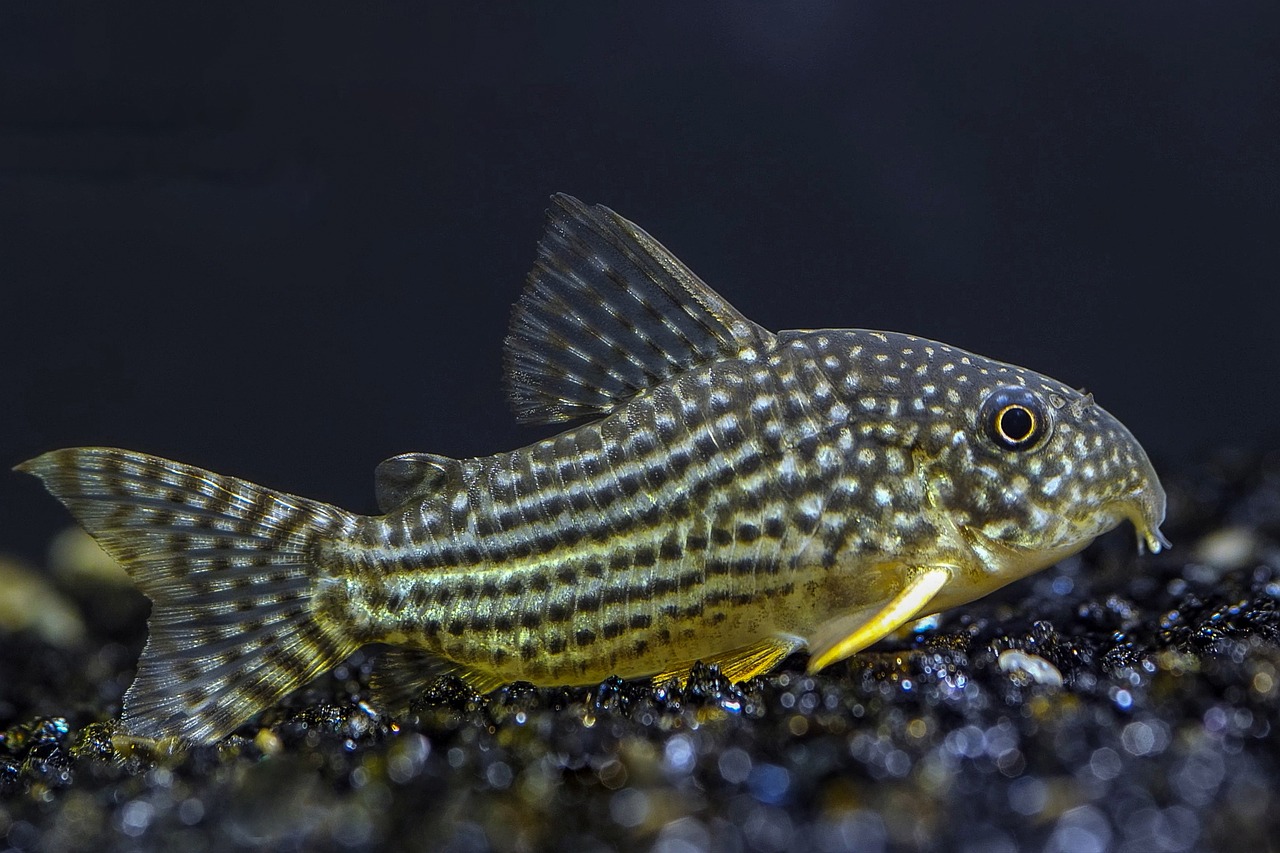
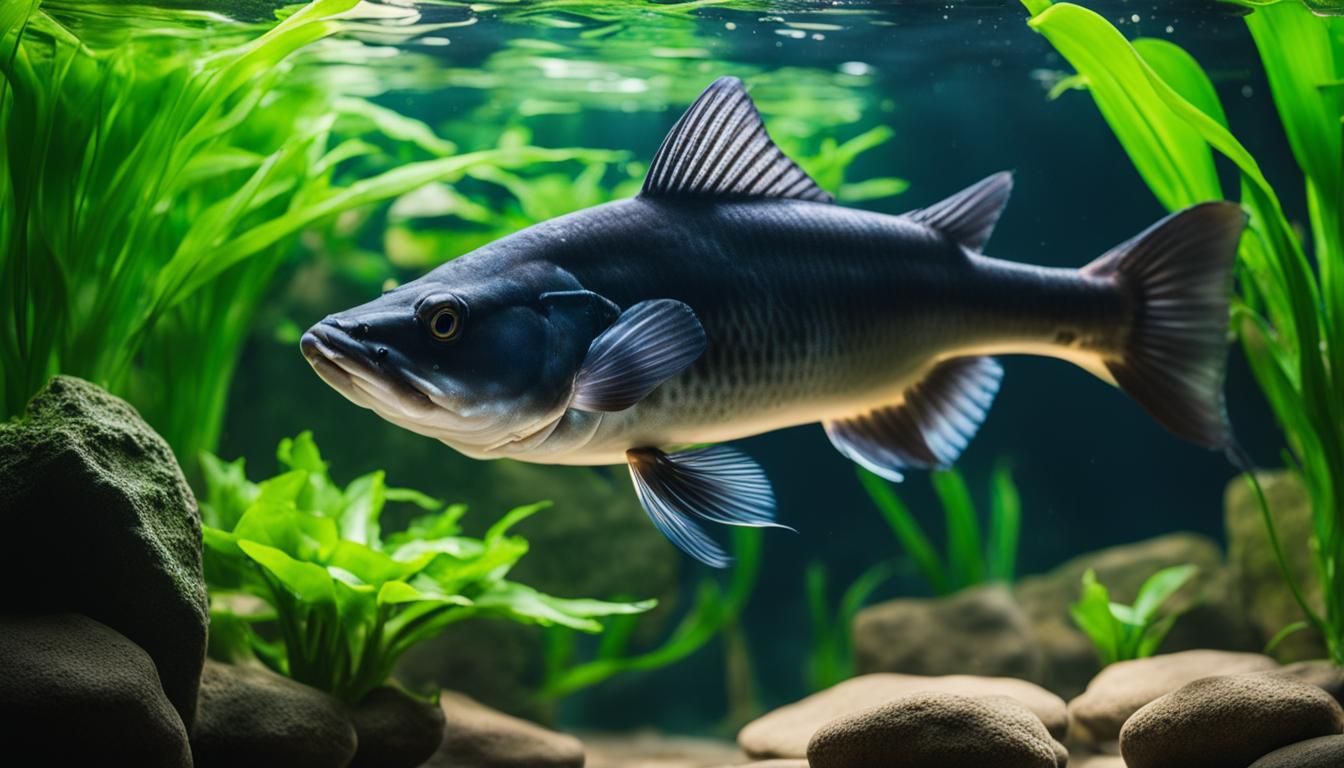
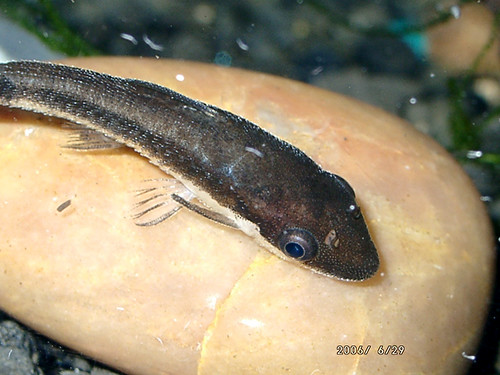

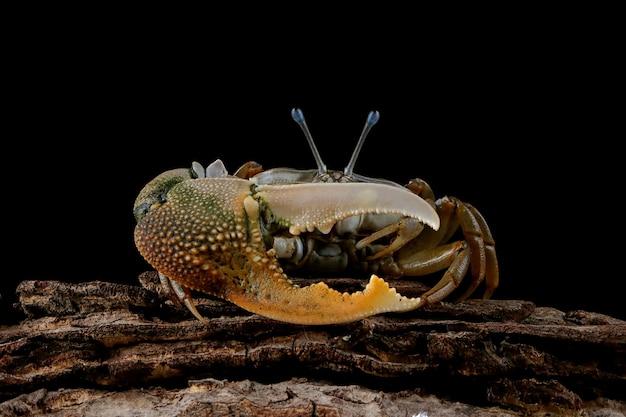
[…] will be your guide in guppy care. I will teach you everything from tank maintenance to overall care. Guppies are loved for how simple they are to breed and for their […]
[…] thinking of adding rainbowfish to your aquarium, it’s important to offer the right care. This guide will show you everything you need to know, including setting up their tank, the best water conditions, their diet, who they get along with, […]
[…] Choose other fish that get along and need similar care […]